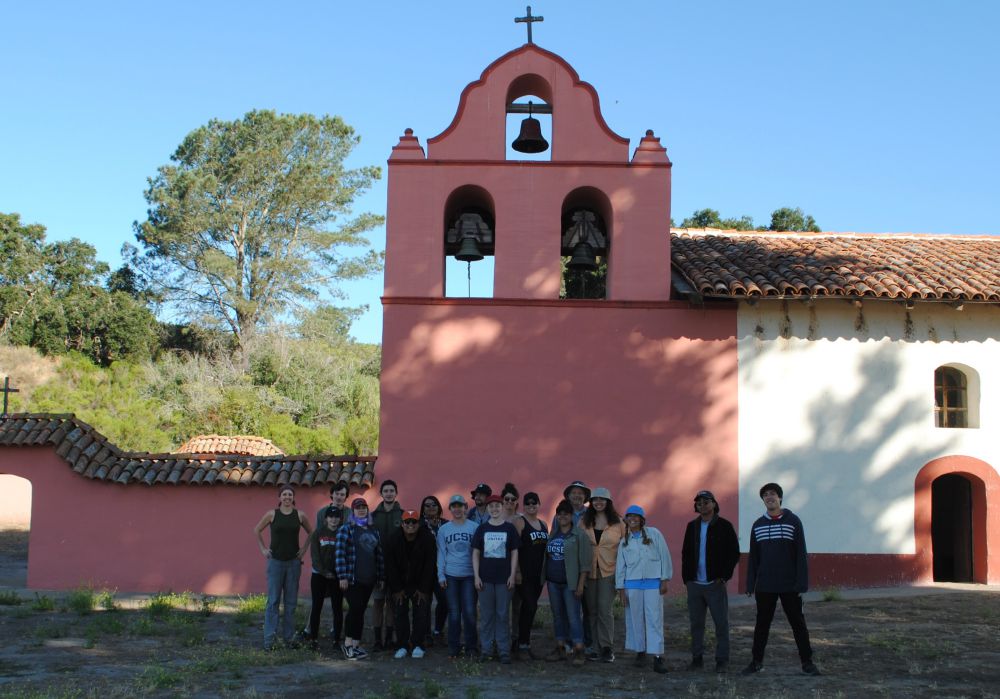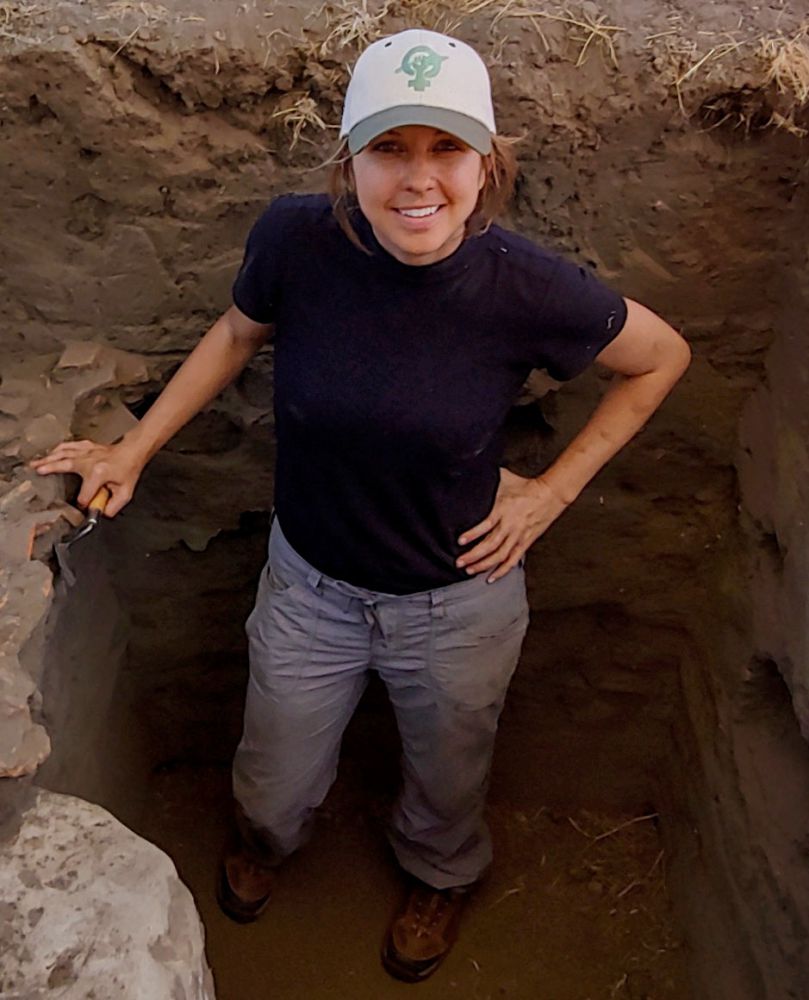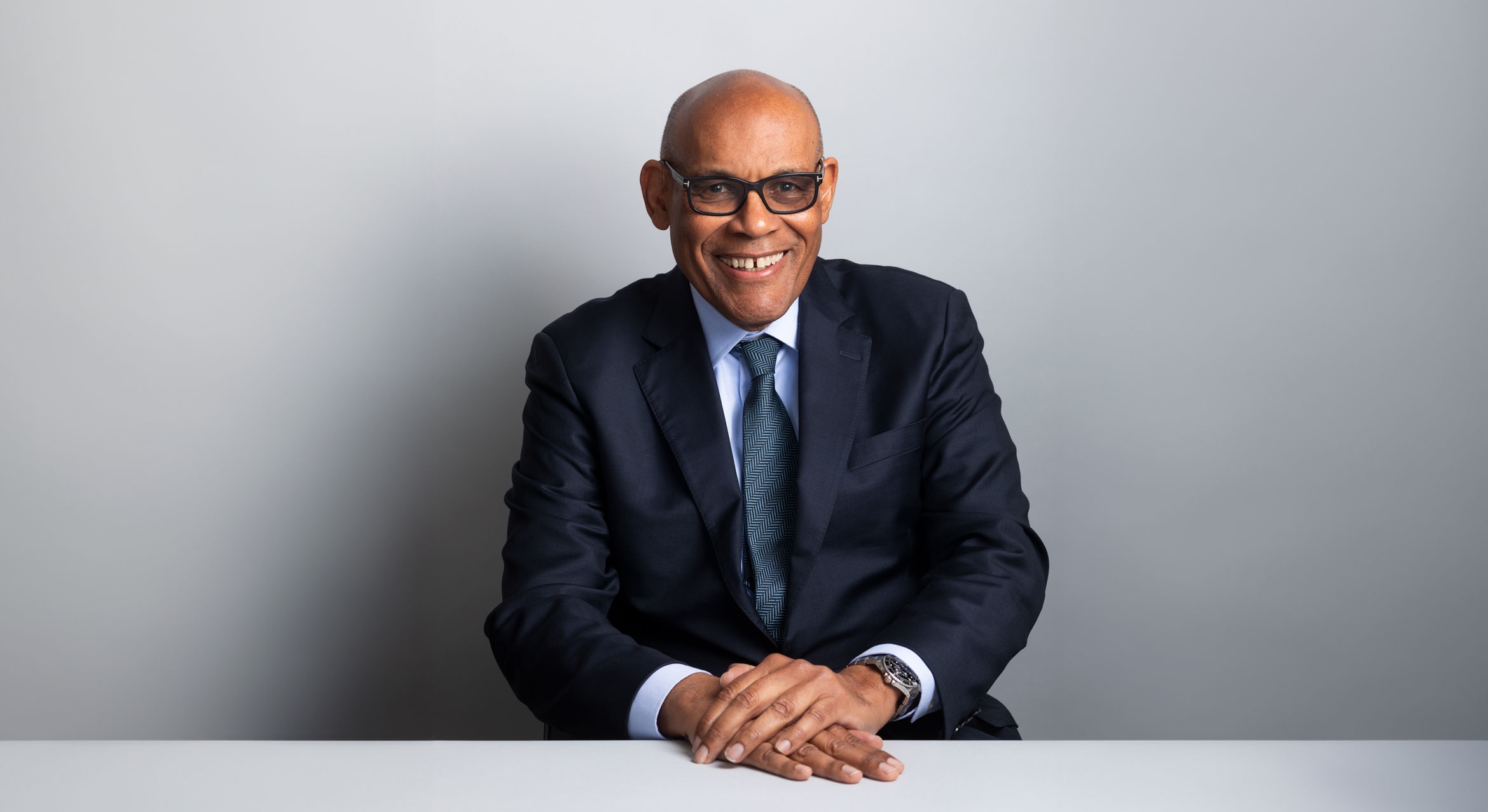
The Dirt on the Dig

When Kaitlin Brown took a number of UC Santa Barbara students to participate in an excavation at La Purisima Mission State Historic Park last summer, she wanted to show them what life is like in the archaeological trenches.
“It was important for me,” said Brown, a UC Santa Barbara doctoral student in anthropology, “not only to have a field school that taught students the field aspects of archaeology and the more romanticized part of fieldwork, e.g., digging in the dirt and discovering one-of-a-kind finds, but the reality of archaeology, which focuses on the variety of different types of data that are uncovered and the need for further laboratory analysis.”
Mission accomplished. Brown’s students and others who worked the dig were invited to present their findings at a symposium during the Society for California Archaeology’s 54th annual conference in Riverside March 13-15.
And then the coronavirus appeared. The conference has now been canceled. That’s unfortunate, Brown said, because conferences provide an important venue for students to not only share their research but to network for future job opportunities.
“Having undergraduates present original research in a symposium can help put them in the spotlight, bolster their CV and meet other people who work in the field,” she said. “The students participating in this symposium represent a diverse group of students from UCSB. As a mentor, I wanted to create an inclusive environment for everyone to have the opportunity to participate.”
The field school work at La Purisima was productive, Brown said. The team was able to identify the area of the Chumash rancheria (village) on the mission grounds and use modern recovery methods that previous digs didn’t have. Flotation samples, for example, will allow the students to understand the different types of plants the Chumash were eating, as well as use fine-grained sampling strategies to better get at some of the everyday activities in the native living spaces.
Aside from unearthing a trove of artifacts, Brown said, one of the highlights of the dig was working with the Santa Ynez Band of Chumash Indians and having a tribal monitor on site over the course of the project. Public outreach and representing the indigenous narrative in the mission space, she noted, was also a highlight, “and many visitors to the park who came to visit our field project remarked on how our work helped them see the mission space differently.”
“But the main highlight,” Brown said, “was seeing the enthusiasm of students who wanted to stay involved over the course of the project and having the opportunity to provide them a space to continue working with archaeological data and allowing them to answer some of their own research questions.”
For Brown, the dig was also an opportunity to demonstrate that the old archaeological model of extracting cultural artifacts in isolation, without input from indigenous descendants, has passed.
“Mission La Purisima occupies ancestral Chumash lands,” she said, “and we honor those generations of Chumash past, present and future. I would like to acknowledge the Santa Ynez Band of Chumash Indians. The archaeological work I am doing is working to abandon the old-school Eurocentric colonial narrative that native peoples had lost all cultural lifeways during the Mission period. Rather, the work we are doing in this symposium is highlighting that local native groups persisted throughout the onslaught of colonialism toward the late end of the Mission period and they continue to remain an active presence today.”
Brown will update the Chumash on the results from the field work at the band’s Elder’s Council Meeting in the next month.
“Working with California State Parks and the Band,” she said, “it is my hope to include an updated permanent interpretive panel at the Mission that highlights the archaeological data recovered from the project and the voices of living descendants.”
Participants in the project include UCSB undergraduates Itzamara Itza, Ariel Ostroff, Jenny Altamirano, and Griffin Fox; recent graduates Marirose Meyer, Anthony Cowell, Lindsey Wiloughby and Elena Hancock; graduate students Brian Barbier, Sarah Noe and Hugh Radde; Chumash tribal monitor Gina Mosqueda-Lucas; Sarah McClure, associate professor of anthropology; and Brianna Rotella, a field volunteer who works at the Albinger Museum.



